When it comes to automotive window tinting, knowing how to choose the right window tint for your car is essential to achieve the desired results. This blog post will guide you through the factors to consider when choosing the right window tint percentage for your car.
From legal regulations to personal preferences, we’ve got you covered. By the end, you’ll have all the information you need to make an informed decision and enjoy the benefits of window tinting on your car.
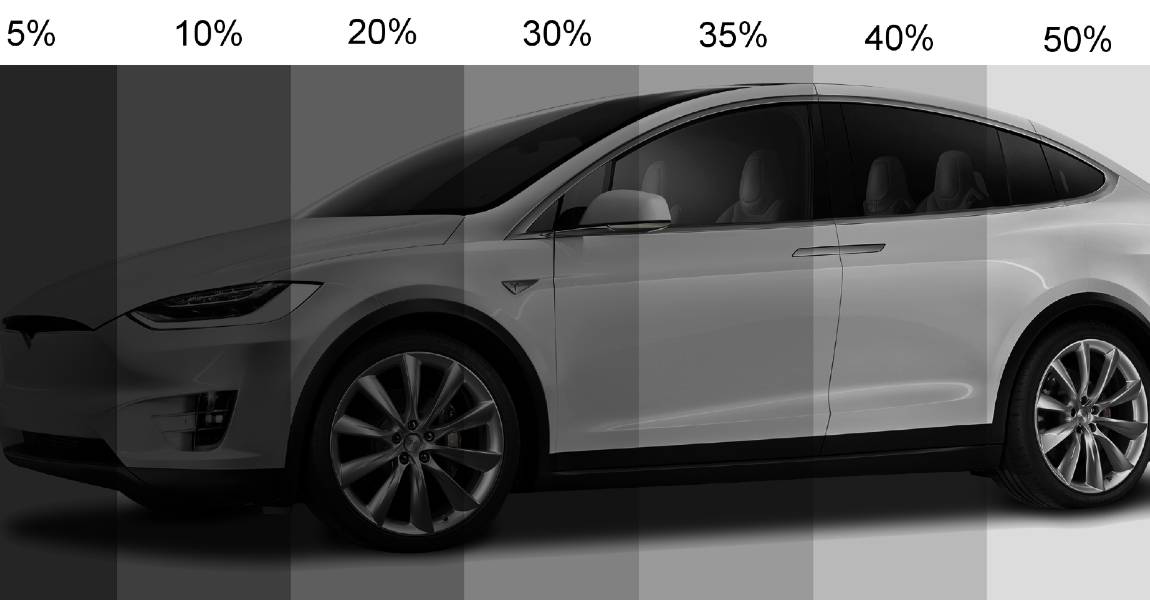
Table of Contents
Understanding How to Choose the Right Window Tint for Your Car
Understanding window tint percentages is important for making an informed decision when it comes to choosing the right window tint for your car. VLT (Visible Light Transmission) percentages determine how much light can pass through the window tint. The lower the percentage, the darker the tint and the less light it allows to pass through.
Different VLT percentages affect glare from sunlight, visibility, heat, and privacy in car window tints.
- A lower VLT percentage means a darker tint, which can reduce glare and provide improved privacy. It may also reduce visibility and increase heat inside the car.
- A higher VLT percentage allows more light to pass through, improving visibility and reducing heat, but it offers less privacy and glare reduction.
Common window tint percentages available on the market include 5%, 20%, 35%, and 50%. A 5% tint is very dark, providing maximum privacy and a reduction in glare but significantly impacting visibility and heat reduction.
- 20% tint offers a good balance between privacy, glare reduction, and visibility.
- 35% tint provides decent privacy and glare reduction while maintaining good visibility and heat reduction.
- 50% tint allows more light in, offering minimal privacy and glare reduction but excellent visibility and heat reduction.
By understanding how different window tint percentages work and their effects, car owners can make an informed decision when choosing the right tint shade for their specific needs.
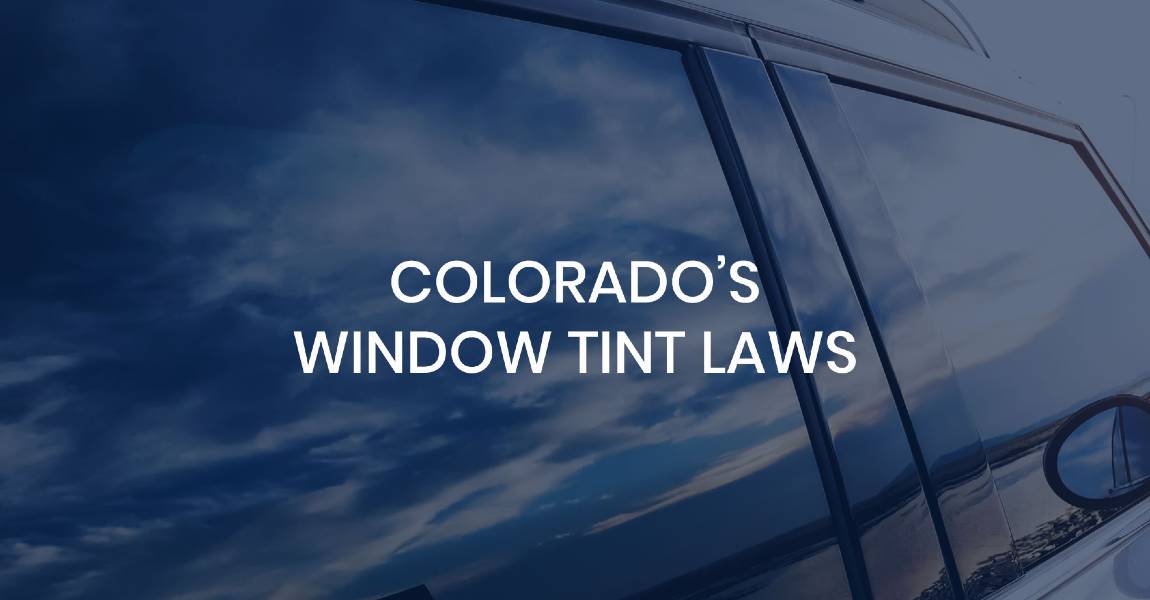
Consider the Legal Requirements in Your Area
Window tint regulations vary from state to state and country to country, so it is important to know your area’s legal requirements.
In most places, the front side windows must have a higher Visible Light Transmission (VLT) percentage than the rear side windows and back windshield. For example, in California, the VLT percentage for the front side windows must be at least 70%, while the rear side windows and back can have a VLT percentage of 70% or lower.
Regarding reflectiveness, most areas have restrictions on how reflective the tint can be, with the aim of preventing excessive glare for other drivers on the road.
Violating window tint laws can result in fines, mandatory removal of tints, and even points on your driving record. It is crucial to follow the local regulations to avoid these penalties.
Before applying window tint to your vehicle, be sure to research the specific tint percentages and reflectiveness ratings allowed for each type of window in the state or country where your car is registered, and ensure that you comply with the window tint laws to avoid legal issues.
Different Automotive Tint Percentages
Window tint percentages refer to the amount of light a tint allows to pass through the glass. This is measured by the Visible Light Transmission (VLT) percentage. The lower the VLT percentage, the darker the tint.
Different window tint percentages impact reduction in glare, driver visibility, heat protection, and privacy. A higher VLT percentage allows more light to pass through, reducing glare and maintaining better visibility. It also provides less heat rejection and privacy. A lower VLT percentage results in better heat rejection and extra privacy, but it may also reduce visibility and cause eye strain, especially in darker films.
The standard percentages for auto window tinting are 50% for the front driver and passenger’s side and 35% for the back.
Other window tinting options are available, such as ceramic tint, carbon window tint level, and the “built-in” factory tint, each offering different benefits such as energy efficiency and improved heat rejection. It is important to consider these factors when choosing the right window tint percentage for your vehicle.
A survey conducted by 3M, a leading window film manufacturer, revealed that 58% of respondents cited privacy as the primary reason for choosing a window tint percentage. By blocking the view into a vehicle or building, window tints can provide individuals with a sense of security and peace of mind.
Different Window Tinting Percentages and Their Uses
– 5% – 20% tint: Very dark tint that provides maximum privacy and heat reduction
– 20% – 35% tint: Popular choice for car owners looking for a balance between privacy and visibility
– 35% – 50% tint: Lighter tint that allows more visibility while still providing some privacy and heat reduction
– 50% – 70% tint: Lightest tint that offers minimal privacy and heat reduction but still blocks some glare
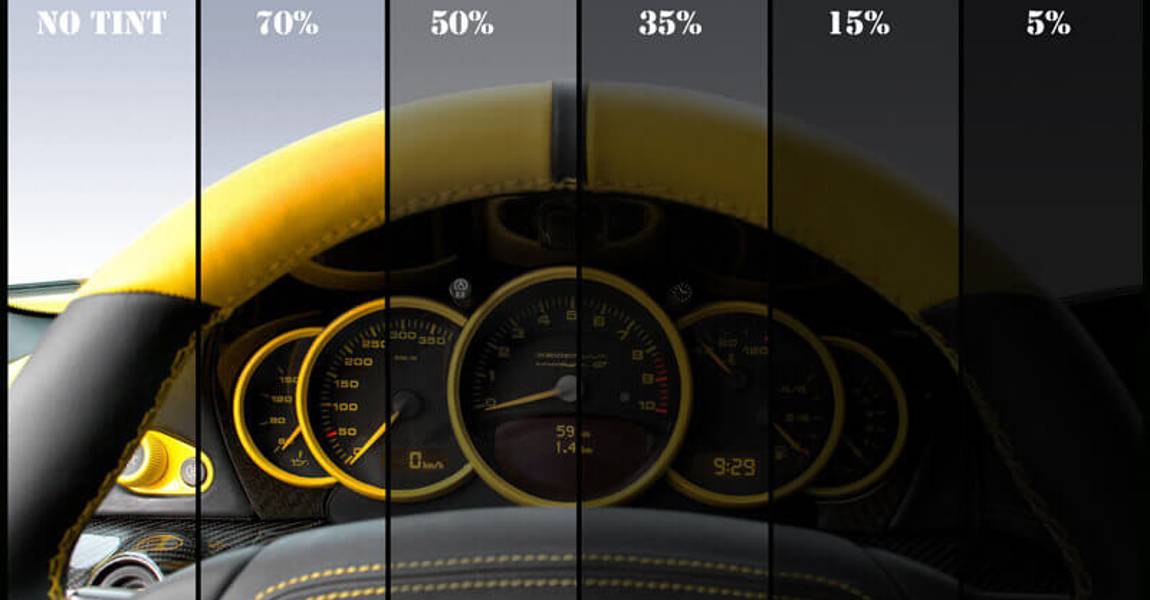
What is the Best Window Tint Percentage?
The best vehicle window tint percentage can vary depending on individual preferences and local regulations. Many car owners opt for a tint percentage between 30% and 50%, which balances visibility, heat reduction and UV protection.
According to a study by the International Window Film Association, windows with a tint percentage of 35% to 50% can reduce solar heat gain by up to 45%, helping to lower energy cost associated with cooling the interior of a building or vehicle.
What to Consider When Choosing Window Tint Percentage
When choosing the tint percentage for your car, several factors should be considered. The tint’s primary purpose, whether for privacy, UV protection, or heat reduction, will determine the appropriate tint percentage.
It is also important to know about the laws in your area regarding how dark the tint can be.
Consider your climate; hot climates may require a higher percentage of tint for heat reduction, while colder climates may benefit from a lighter tint for better visibility in bad weather conditions. When choosing your tint, consider which is the best car window tint option for extreme weather conditions in your area,
Professional installation is essential for a sleek appearance and to ensure that the tint adheres properly without air bubbles or peeling.
Investing in high-quality film is also important for longevity and maintaining the aesthetics of your car. A reputable auto window tinting service can provide guidance on the best options for your specific needs and climate.
Additional Considerations for Choosing Window Tint Percentage
Several important factors must be considered when choosing the right window tint percentage for your vehicle. In addition to the legal requirements and personal preferences for visibility and privacy; additional considerations can impact the overall effectiveness and look of your window tint.
These factors include the type of the material used for the tint, the climate and weather conditions in your area and the potential impact on the functionality of your vehicle or home.
Considering these additional considerations can help you select the perfect window tint percentage for your specific needs.
A study by the International Window Film Association found that window tints with a higher percentage, around 70% to 90%, can block up to 99% of harmful ultraviolet (UV) rays from entering a vehicle. This protection helps to prevent skin damage and the fading of the interior and can even reduce the risk of skin cancer.
Cost of Window Tinting
Several factors can influence the cost of window tinting.
- The type of vehicle, such as a sedan, SUV, or truck, can impact the price as larger windows or unique shapes may require more materials and labor.
- The desired tint percentage is another factor, as darker tints typically cost more due to the additional materials required.
- The quality of the tint film also plays a role, with higher-quality films often being more expensive but providing better durability and performance.
There may be additional costs for specialized tints, such as heat-rejecting or UV-blocking films, and installation labor may require extra attention if the vehicle is particularly complex to work on.
It is also important to consider the potential legal fines for non-compliance with tinting laws, which can add to the overall cost.
Drivers looking for quality window film may opt for professional-grade film, which can also raise costs.
Choosing a professional window tinting shop is important to ensure the best results and avoid potential issues. Keeping these factors in mind can help individuals make an informed decision about vehicle window tinting.
FAQ’s
Can I tint my windows myself, or should I hire a professional?
It is recommended that you hire a professional. They have the expertise and necessary tools to ensure a proper and high-quality tint application.
How long do automotive tints typically last?
On average, window tinting can last between 5 to 10 years. The lifespan of window tinting can vary depending on factors such as the quality of the tint material, installation techniques, and environmental conditions.
Regular maintenance and avoiding harsh cleaning agents can help prolong the lifespan of window tinting.
Will tinting affect my visibility at night?
Yes, car window tinting can affect visibility at night.
Can I remove the tint if I change my mind?
Yes, tint can generally be removed if you change your mind. The ease of removal will depend on the type of tint and how it was installed. It is recommended to seek professional help to remove the tint without damaging the glass.
Conclusion
In conclusion, when choosing the perfect window tint percentage for your car, it is important to consider state laws, personal preferences, and the purpose of the tint. State laws vary on the allowable automotive tint percentages, so it is crucial to research and adhere to these regulations to avoid fines or legal issues.
Personal preferences play a significant role in the decision-making process. Some may prefer a darker tint for increased privacy and a sleek look, while others may prioritize a lighter tint for better visibility and a more open feel. It is also essential to consider the primary purpose of the tint.
For example, a higher tint percentage may be necessary if UV protection is a priority.
Weighing these factors is crucial in making the best decision for your car. It is important to find a balance that meets both legal requirements and personal preferences while also serving the tint’s intended purpose. In the end, the perfect window tint percentage aligns with state laws, provides the desired level of UV protection, and meets aesthetic preference.
If you are in Denver and interested in tinting for your car, you can contact our professional installers at Protech Auto Shield for a free estimate on their services. They can advise on the most excellent choice of tint percentage and high-quality film for your car’s appearance and function.




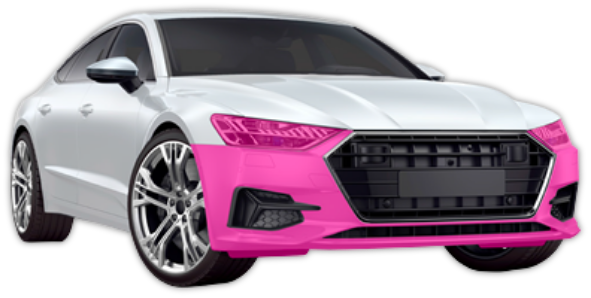
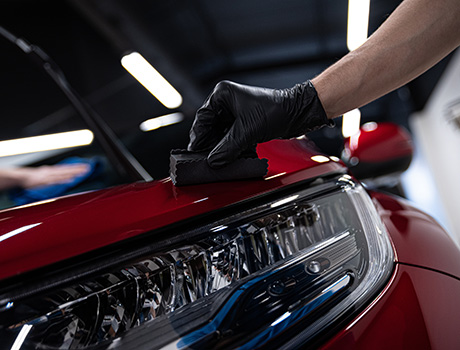
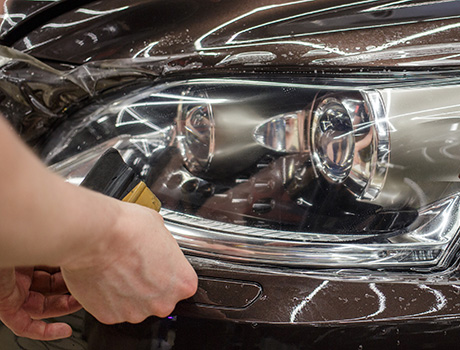

WHAT OUR CLIENTS ARE SAYING